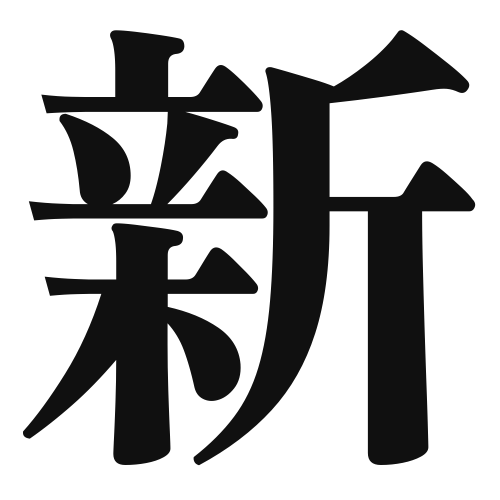1. Overview of Meaning
The kanji “新” (pronounced “shin” or “atarashi”) means “new.” It conveys the idea of freshness, novelty, and the beginning of something.
2. Formation and Radical
The kanji “新” is a compound character that combines elements to convey its meaning. It consists of the radical 木 (tree) and the phonetic component 辛 (spicy or bitter). The presence of the tree suggests growth and new beginnings, while the phonetic component contributes to its pronunciation.
3. Examples of Usage
Common words and phrases that include “新” are:
- 新しい (atarashii) – new
- 新年 (shinnen) – New Year
- 新聞 (shinbun) – newspaper (literally “new report”)
Example sentence in daily conversation:
「新しい本を買いました。」(Atarashii hon o kaimashita.) – “I bought a new book.”
4. Synonyms and Antonyms
Similar kanji with related meanings include:
- 若 (waka) – young, which conveys a sense of youthfulness but is not directly synonymous with “new.”
Antonyms include:
- 古 (furui) – old, which represents the opposite of new.
5. Cultural and Historical Background
The kanji “新” is deeply rooted in Japanese culture, often associated with new beginnings and celebrations, such as the New Year (新年). It appears in various proverbs and idiomatic expressions, such as:
- 新しい風を吹き込む (atarashii kaze o fukikomu) – “to bring in a new breeze,” meaning to introduce fresh ideas or changes.
This reflects the cultural appreciation for innovation and renewal in Japanese society.
